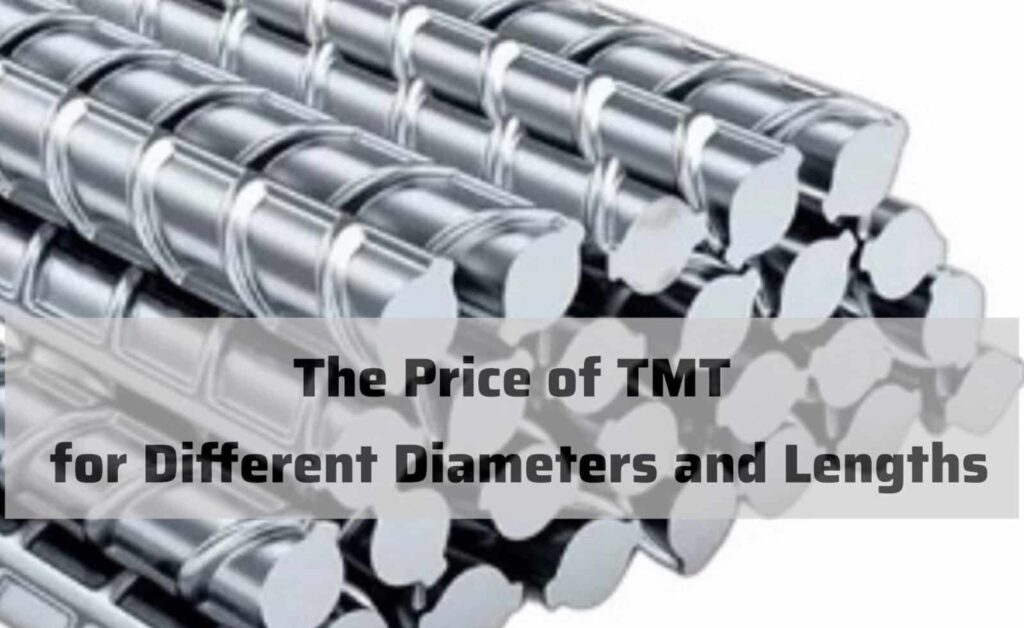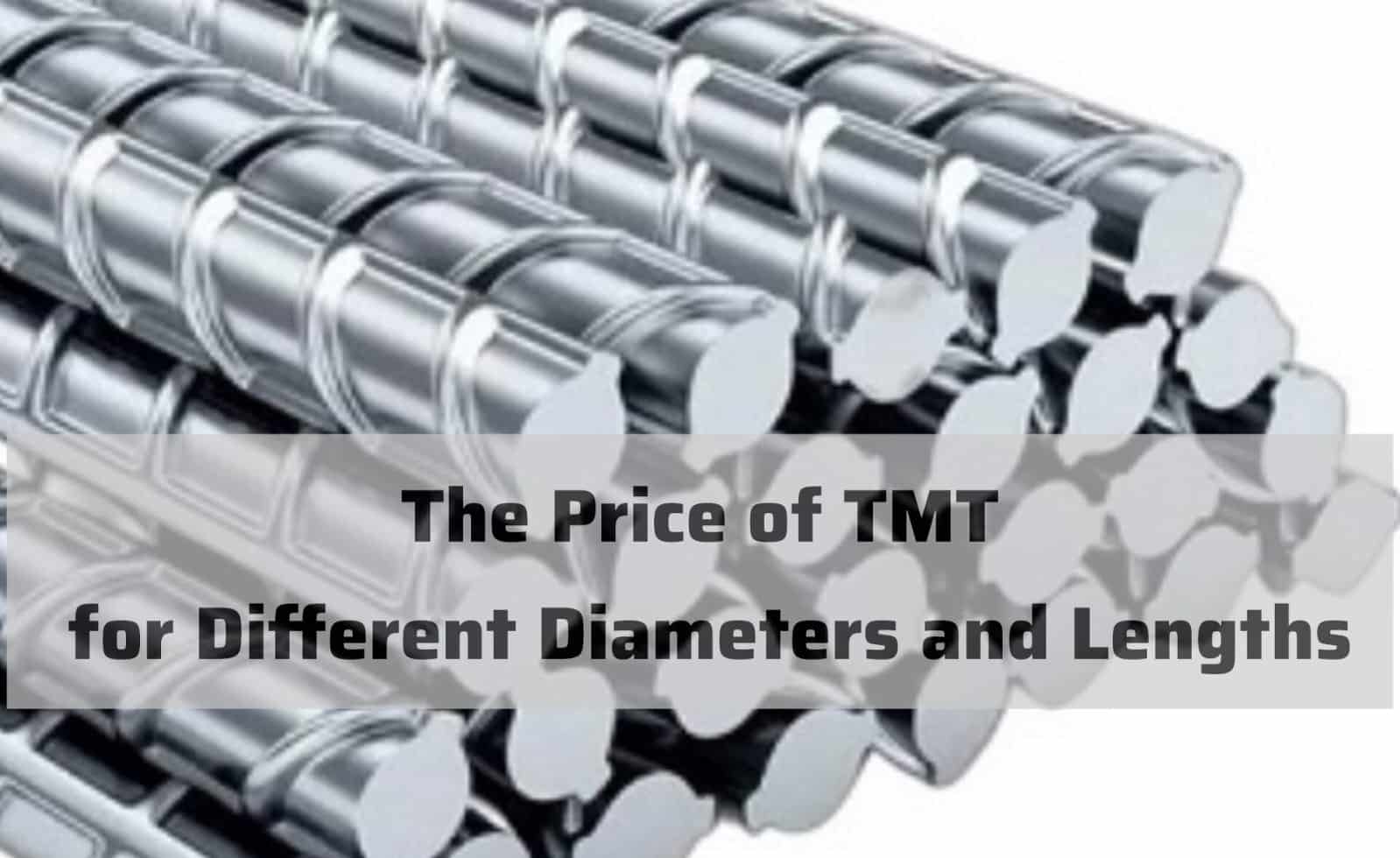It is important to note how the price of TMT bars changes with different diameters and lengths of the bars to plan the budget for construction projects.

1. Diameter of TMT Bars
– 8mm to 10mm: These are small diameter bars and they are commonly used for stirrups and other forms of reinforcement bars. It is known that they are cheaper per kilogram than the larger diameters.
– 12mm to 16mm: They are used for the primary reinforcement in beams and columns. They are slightly more expensive per kilogram because the amount of material used is higher.
– 20mm to 32mm: There are also big diameter bars that are applied for the construction of such objects as bridges and industrial buildings. This is attributed to the fact that they use a lot of steel in their manufacture and so they are costly.
2. Length of TMT Bars
– Standard Length (12 meters): TMT bars are commonly produced in standard sizes of 12 meters in most companies. This standardization assists in mass production which is usually cheaper and thus more preferred.
– Custom Lengths: This is because to achieve the desired length of TMT bars the bars have to be processed further and this leads to higher costs. It may also result in wastage, which can even increase expenditure.
3. Price Per Kilogram
– Bulk Purchases: Buying TMT bars in large quantities can also be cheaper since the price per kilogram will be lower. Bulk buying from the suppliers is cheaper which is helpful in large construction projects.
– Retail Purchases: Small quantities are usually more costly per kilogram because the cost of handling as well as transporting it is relatively high.
4. Market Factors
– Raw Material Costs: TMT bar prices are directly affected by the price of raw materials which include iron ore and scrap steel. These costs are variable and this means that any change in these costs has an impact on the final prices.
– Demand and Supply: This means that factors such as high demands or low supplies can cause the price to go up. On the other hand, lower demand or oversupply in the market can lead to a decline in prices.
– Geographical Location: Supplier and construction site location can influence prices since transporting the materials will be costly, and market prices differ from region to region.
5. Quality and Brand
– Branded TMT Bars: This is the case because reputable brands are usually associated with high quality and usually have higher prices than those of inferior products which do not meet most of the Quality Standards. Their bars are sometimes certified and tested to ensure they are up to standard.
– Local Manufacturers: While the small and regional companies may be cheaper, the cost should not be used as an indicator of quality since not all products meet the standard quality set in the market.
Summary
– Diameter Variations: They are cheaper, if their diameter is less; the diameter is more, the cost will be more due to the usage of more material.
– Length Variations: Standard twelve-meter lengths are less expensive; there are ways to make the costs go up if the lengths are altered.
– Bulk vs. Retail: Purchasing a large quantity of bar is cheaper than when one buys a small amount, yet the price is higher.
– Market Influences: Fluctuations in the prices of raw materials, demand and supply factors, and local conditions influence the price.
– Brand and Quality: Branded bars are costlier but have better quality; local bars are relatively cheaper but one needs to conduct some tests to be sure of the quality.


